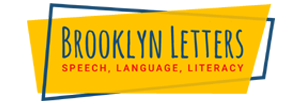Understanding the Different Types of Stuttering Tests

Stuttering is a communication disorder affecting millions of people worldwide, making speaking a challenging and often frustrating experience. While stuttering can manifest differently in individuals, it often leads to interruptions in speech flow, repetition of sounds or words, and prolonged pauses. As research and understanding of stuttering continue to evolve, so does the development of comprehensive stuttering tests that aim to provide accurate diagnosis and effective treatment strategies.
Stuttering tests are an important part of diagnosing and treating stuttering. It is important to understand and be aware of the different types of tests available and the purpose they serve. In this blog post, we will discuss the different types of stuttering tests, how they are used, and their benefits. We will also look at the importance of accurate diagnosis and how it can help provide a successful treatment plan.
Signs and Symptoms of Stuttering
Stuttering can be a difficult condition to diagnose, as its symptoms are not always immediately obvious. Common signs of stuttering can include repetition of words or sounds, pauses and prolongations in speech, and difficulty starting a word or phrase. A person may also display physical symptoms when stuttering, such as eye blinking, facial tension, and foot tapping. To determine the severity of a person’s stutter and the best course of treatment, stuttering tests in English (US) language can be used.
Stuttering tests are an important tool in determining the severity of a person’s stutter and helping them to find the appropriate treatment. With the help of a qualified speech-language pathologist, these tests can provide insight into how the person’s speech patterns have changed and how best to tackle their stutter.
Risk Factors for Persistent Stuttering
Stuttering is a speech disorder that affects around 1% of the global population. While the exact cause of stuttering is still not fully understood, there are a number of factors that are believed to contribute to it.
Genetics plays an important role in stuttering, with 60-80% of stutterers having a family member who also stutters. Neurophysiological studies have also found differences in how the brains of people who stutter are wired compared to those who do not.
Stuttering is more common in boys than girls and usually first appears between the ages of 2 and 6 when a child is developing their language skills. Stressful situations or fear of being judged can also trigger stuttering or worsen. Environmental factors such as bullying or hearing stuttering in the home can also increase the risk of stuttering. Finally, certain medical conditions such as autism, hearing loss, or cerebral palsy can also increase the risk of stuttering.
Understanding Stuttering Tests
Stuttering is a speech disorder that affects around 1% of the world’s population. To assess the severity of stuttering, a stuttering test is often used. These tests involve asking a series of questions or tasks to measure a person’s speech fluency. This information can be used to diagnose and treat the condition more effectively.
Stuttering tests can also be used to identify other speech and language disorders, as well as provide insight into the causes of stuttering. This helps create an appropriate treatment plan.
There are norm-referenced assessments commonly used for assessment of stuttering in school-age children, such as the Stuttering Severity Index 4 (SSI4), the Test of Childhood Stuttering (TOCS), and the Behavior Assessment Battery for School-Age Children (BAB). Each of these tests has its own criteria and scoring system, offering varying levels of detail.
1. Stuttering Severity Index 4 (SSI-4)
The Stuttering Severity Index 4 (SSI-4) is a widely recognized and comprehensive assessment tool used to evaluate the severity of stuttering in individuals of all ages, from preschoolers to adults. It is designed to provide clinicians with a standardized measure of stuttering severity and assist in treatment planning, monitoring progress, and conducting research on stuttering.
The SSI-4 assesses various aspects of stuttering, including frequency, duration, and physical concomitants of disfluencies. It provides a quantitative measure of stuttering severity based on the Stuttering Severity Instrument (SSI), which has undergone multiple revisions to enhance its accuracy and clinical utility.
2. Test of Childhood Stuttering (TOCS)
The Test of Childhood Stuttering (TOCS) is an assessment tool used to evaluate the severity and characteristics of stuttering in children aged 3 to 10 years. It assesses various aspects of stuttering, including frequency, duration, and types of disfluencies. The TOCS includes different speaking tasks and contexts to capture a comprehensive understanding of the child’s stuttering profile. It also evaluates speech naturalness and provides a severity rating to aid diagnosis and treatment planning. The TOCS is designed with age-appropriate materials to engage children during the assessment process. It is valuable for clinicians to determine the severity of stuttering, monitor progress, and develop effective intervention strategies.
3. Behavior Assessment Battery for School-Age Children (BAB)
The Behavior Assessment Battery for School-Age Children (BAB) is a comprehensive set of assessments designed to evaluate various aspects of a child’s behavior, emotional functioning, and social skills. It is specifically tailored for school-age children to gather information from multiple sources, including parents, teachers, and the child themselves.
The BAB typically consists of a combination of standardized tests, rating scales, observations, and interviews. These assessments cover a wide range of domains, including cognitive abilities, academic skills, adaptive behavior, social skills, emotional well-being, and behavior problems.
The purpose of the BAB is to provide a holistic understanding of the child’s strengths, challenges, and potential underlying factors that may impact their academic performance, social interactions, and overall functioning. The BAB helps identify any developmental, emotional, or behavioral issues that may require intervention or support by assessing these different areas.

Components of a Stuttering Test
- Case History and Interviews: The SLP conducts an initial interview to gather information about the individual’s personal and family history, speech development, and previous therapy experiences. This step helps create a holistic picture of the individual’s journey with stuttering and offers insights into potential contributing factors.
- Speech Fluency Evaluation: The SLP observes and records the individual’s speech patterns in various contexts, such as conversation, reading aloud, or spontaneous speech. This evaluation includes assessing the frequency, duration, and types of disfluencies exhibited and secondary behaviors like tension or avoidance strategies.
- Language and Motor Skills Assessment: Stuttering tests often involve evaluating other speech and language aspects, such as articulation, voice quality, language comprehension, and expressive language skills. Motor skills related to speech production, such as breathing, voicing, and articulatory coordination, are also examined to understand the individual’s overall communication abilities comprehensively.
- Emotional and Psychological Factors: Stuttering can have a significant impact on an individual’s emotional well-being and self-perception. Stuttering tests may incorporate assessments to identify psychological factors like anxiety, self-esteem, and attitudes toward communication. This information helps guide the development of therapeutic interventions that address both the physical and emotional aspects of stuttering.
Treatment For Stuttering
A speech-language pathologist (SLP) can work with you to assess and treat stuttering. Treatment typically includes a combination of strategies to help reduce stuttering and increase fluency. Treatment may include relaxation techniques, breathing exercises, and strategies to increase self-confidence and reduce anxiety. Your SLP may also work with you to create a plan for daily activities and conversations. If you feel overwhelmed or anxious about stuttering, your SLP may also provide counseling to help you manage these feelings. With the help of an SLP and a customized treatment plan, many people with stuttering can improve their fluency and communication.
Conclusion
Stuttering tests serve as crucial tools in assessing and understanding stuttering, a communication disorder characterized by disruptions in speech fluency. These tests, such as the Stuttering Severity Index 4 (SSI-4), Behavior Assessment Battery for School-Age Children (BAB), and the Test of Childhood Stuttering (TOC), provide objective measures to assess the severity, characteristics, and impact of stuttering on individuals. The importance of these tests lies in their ability to guide diagnosis, treatment planning, and progress monitoring.
Stuttering tests enable clinicians to tailor interventions to individual needs, track therapy outcomes, and contribute to research advancements in the field. Ultimately, stuttering tests are vital in improving the quality of care and support for individuals who stutter.
Need help with stuttering? Chat with us today!
FREE CONSULTATION!!!
Call: (347) 394-3485, Text: (917) 426-8880
Email: [email protected]
(we respond to email right away!)
Craig Selinger
Latest posts by Craig Selinger (see all)
- NYC Middle School Transition Support Group - April 7, 2024
- Understanding Toddler Neurodevelopmental Evaluation - April 3, 2024
- Rare Diseases in New York City - February 29, 2024













